
Brain Health: How To Naturally Boost Endorphins
I’m you’ve all heard the word ‘endorphins’ before; some of you may be au fait with their function, others may not – but whichever group you fall into, knowing how to increase the level of endorphins in your body can have profound effects on not only your mental and brain health but also your ability to manage pain.
In today’s post, we’re going to briefly examine what endorphins are and what role they play in the body, followed by looking at the scientific research that supports a plethora of ways that you can naturally boost your levels of this feel-good chemical messenger.
Endorphins: A Brief Introduction
In short, endorphins are the chemical messengers that exist in the human body, released by the pituitary gland (in your brain) and the central nervous system (often abbreviated at CNS) under specific conditions. Although experts are still trying to decipher the entirety of their function, research published in 2010 discovered that endorphins play a major role in both the feeling(s) of pleasure and pain management1.
Endorphins are typically released in three situations:
– When you are injured.
– When you are experiencing stress.
– When you experience pleasure (a natural reward system).
The release of endorphins can help to reduce pain, decrease stress levels and may induce feelings of euphoria, i.e. they have can have a significantly positive effect on the way you feel.
But how can you boost them naturally? Let’s take a look.
Endorphins: How To Increase Them Naturally
Boosting your natural levels of endorphins isn’t as difficult as you’d think. Here are a multitude of easy everyday-life ways that you can do it:
Exercise
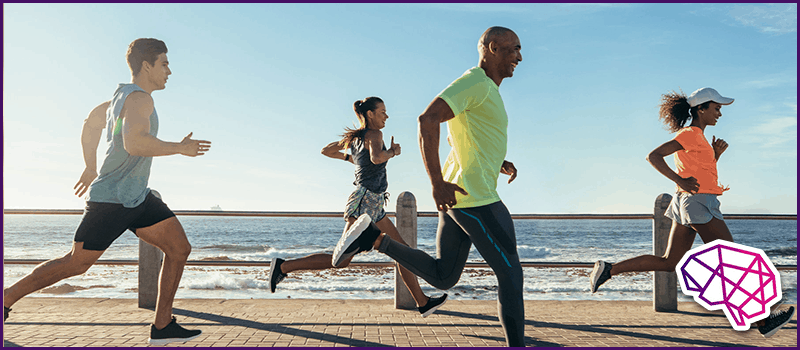
We’re all aware of the myriad of positive health benefits that exercising can have. Still, it’s not only physical health that is improved through exercise – mental health can also be too – and that’s largely down to the actions of endorphins. The more you exercise, the more benefits you’ll typically see, but don’t think that you need to be a fitness freak exercising every day hour several hours to reap the rewards; exercising three or four times per weeks for 30-45 minutes can have a profound effect on your brain and mental health – thanks in no small part to endorphins.
Let’s take a look at the science:
– The release of endorphins is associated with continuous exercises. A study published in 2011 discovered that endorphins are released after around 30 minutes of exercise. Half an hour of exercise may seem like a lot, but it’ll fly by once you’re in your groove 2.
– Exercise of a moderate intensity might be the best option. Research released in 2017 found that the participants of the study experienced endorphin-induced euphoric feelings around 60 minutes of moderate-intensity activity. If you’re wondering what ‘moderate-intensity’ exercise is, it’s any form of exercise that increases your rate of breathing and heart rate. You’ll be able to talk, but you’ll be a little short of breath and will have some degree of perspiration3.
– Working out with others may actually further increase the endorphin related associated with exercise. Research published in 2010 indicates that this exercising in groups has a great endorphin release than those working out alone4.
Acupuncture
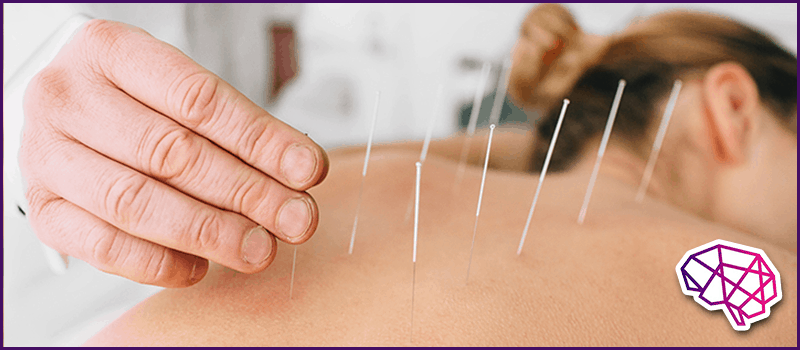
If you’ve got a phobia of needles, possibly gives this one a miss! However, if you’re open to trying new things and are curious about this type of Chinese medicine, you could find your endorphin levels going through the roof.
Acupuncture has been associated with a plethora of mental and physical health benefits, including, but not limited to receiving chronic pain5, combatting anxiety and depression6, and even soothing premenstrual syndrome symptoms7.
Furthermore, research conducted in 2004 found that endorphin releases are induced when needles are inserted (as part of the acupuncture process)8.
Although it is easy to be sceptical about alternative medicines like acupuncture, as you can see from the studies listed above, there is a solid amount of research that suggests it can help not only to boost endorphins release but also help with several mental and physical health issues.
Meditation

If there’s one practise that’s synonymous with relaxation, calms and feeling good, it’s meditation. Research published in 20119, found that meditation can boost levels of endorphins, as well as having an array of other positive mental and physical health effects, including:
– Improved over physical health and vitality.
– Enhanced mood (probably the endorphins!).
– Improved sleep quality.
If you’ve never considered meditating before, it can be a little daunting knowing what to do or what is the ‘right’ way to meditate. If you’re open to meditation but unsure where to begin, here’s a handy little step-by-step guide for you:
– Find a quiet spot where you’re unlikely to be disturbed.
– Get into a comfortable position. It doesn’t matter whether you’re lying, sitting or standing, just as long as you’re comfortable and relaxed.
– Ease your mind and allow your thoughts (positive and negative) to drift away.
– When new thoughts enter your head, acknowledge them without any judgement or need to cling to them or push them away. Allow them to be as they are and be at one with them.
Essential Oils
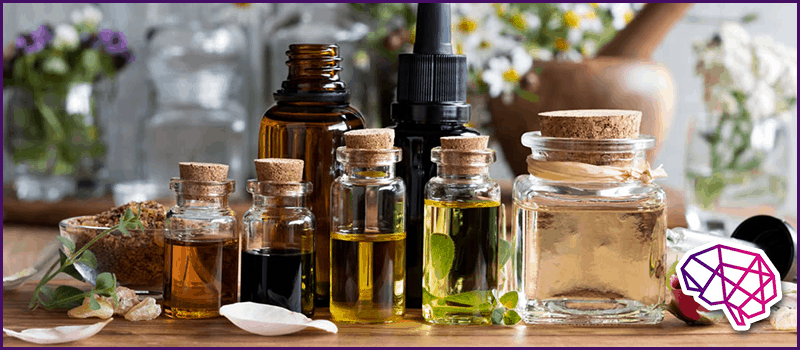
Many of us love the smell of essential oils such as peppermint, rosemary, lemon and eucalyptus – but the science behind this goes a little deeper than just your sense of smell. According to research published in 2012, aromatherapy using lavender oil appears to help relieve stress and anxiety linked to the insertion of IUD (intrauterine device)10. It concluded that “ Aromatherapy with lavender inflation was effective in decreasing anxiety in IUD procedure, and this method can be used in health care centres as complementary treatments.”
A later study, released in 2017, backed up the findings of the aforementioned 2012 study, proposing that inhalation of essential oils can prompt endorphin release11.
Wine and Dark Chocolate
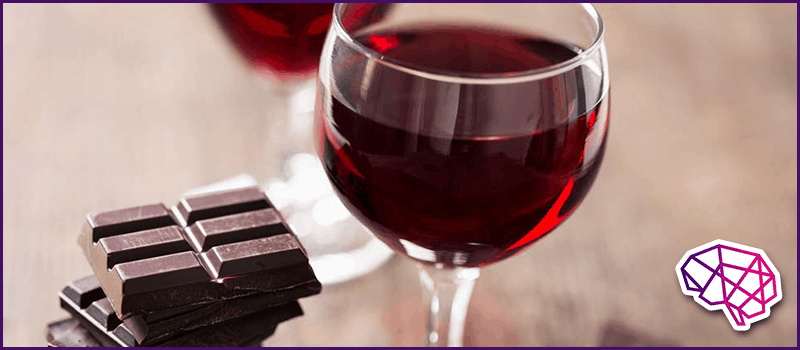
When people feel stressed or low, they often turn to comfort food and drink, such as wine or dark chocolate. However, there is more to the effects that eating chocolate and drinking wine has on one’s mental state than their impact on our tastebuds. Eating dark chocolate can actually boost the release of endorphins, which, in turn, may make you feel euphoric; therefore, whenever you feel down or depressed you’ll reach for foods that make you feel good – and chocolate is one of the best at doing that.
If you’re not a fan of chocolate, red wine has also been shown to increase natural endorphin levels.
Laughing With Others

We all laugh, and we all know how good it feels to laugh – particularly with others. Laughing can help eradicate a bad mood or reduce feelings of stress and anxiety. In fact, laughing can be so powerful; there’s a form of CBT (cognitive behavioural therapy) aptly named ‘Laughter Therapy’, that has been shown to decrease feelings of depression and stress. “Laughter therapy is a non-invasive and non-pharmacological alternative treatment for stress and depression…In conclusion, laughter therapy is effective and scientifically supported as a single or adjuvant therapy.”12
Furthermore, laughing with those that you’re close to can actually release endorphins. A study published in 2017 discovered that watching 30 minutes of comedy with friends had a positive impact on endorphin levels. Researchers concluded that “Social laughter increased pleasurable sensations and triggered endogenous opioid release.”13
So, next time you’re with your friends and can’t decide what to watch, why not opt for a comedy?
Drama

Not a fan of comedy? Don’t worry; there is another option. If you’re a fan of drama or other types of genres that emotionally affect you, you may also get an endorphin hit. There is some research that suggests that endorphin release during a drama (or something dramatic) might be on a similar level to comedy.
“…subject who watch an emotionally arousing film have an increased pain threshold and an increased sense of group bonding.”14
This may seem odd as you’d expect the opposite, but there is a logic behind this. Viewing anything that triggers emotions can induce sadness, which can be described as a form of emotional pain, and it has theorised that your brain reacts to this types of emotions by releasing endorphins in a similar fashion to how it would if you were in physical pain. Therefore, don’t be afraid to watch a tearjerker if you’re feeling low – it may actually have the opposite effect.
Kindness
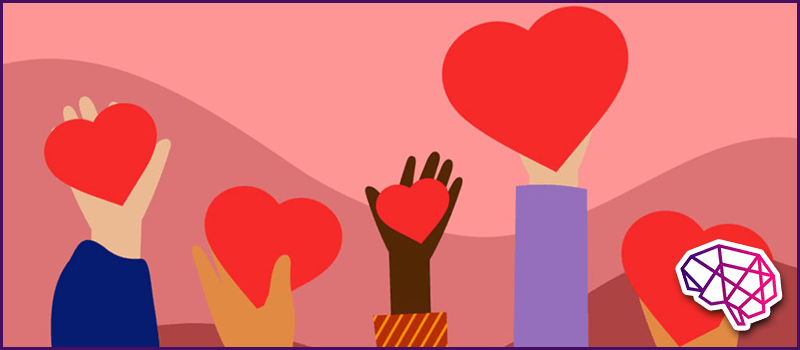
If you’ve ever done something for someone else, it’s natural to feel good afterwards. Doing something for others not only helps others but also has a positive effect on you too. Research has shown that by helping a fellow human being, you’ll feel happier and better about yourself, which is caused by increased endorphin releases. While the boost doesn’t take all that long, it can make want to nice things for others again (to experience the same positive feelings).15
Music
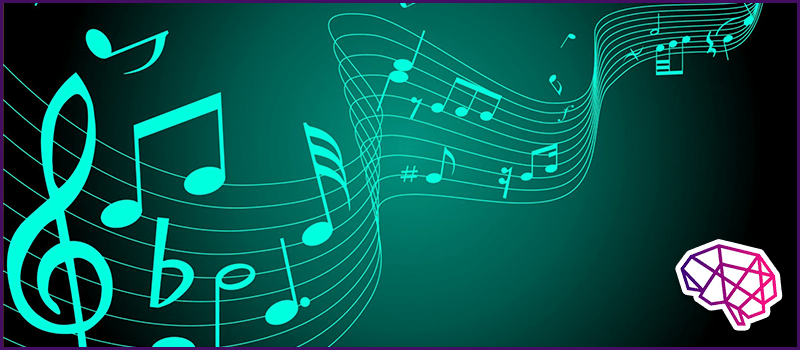
Listening to music can a profound effect on how you feel, but did you know that making music has a greater impact on mood? A study published in 2012 exemplified this effect; it concluded that performing music can induce greater endorphin release than listening to music alone. Researchers concluded that “…it is the performance of music generates the endorphin high, not the music itself.”16. It is not 100% clear why this, but it is theorised that it is the communist aspect of performing, just as social laughter will induce a more considerable endorphin boost.
Sunbathing

Before we discuss the positive effect of getting ‘some rays’, it is vital that we preface this with a health warning (of sorts). UV radiation can increase the risk of skin cancer; therefore, it is essential that sunlight is enjoyed in moderation. When out in the sun for more than 15 minutes at a time, always use a sunscreen with an SPF of at least 20 (ideally higher).
Sunlight offers a myriad of health benefits, including naturally boosting levels of vitamin D – an essential vitamin. It also increases the production of melatonin and serotonin, which can have a positive impact on mood, energy and sleep. UV radiation for periods of 15 minutes or longer can also enhance the release of endorphins.
Massages
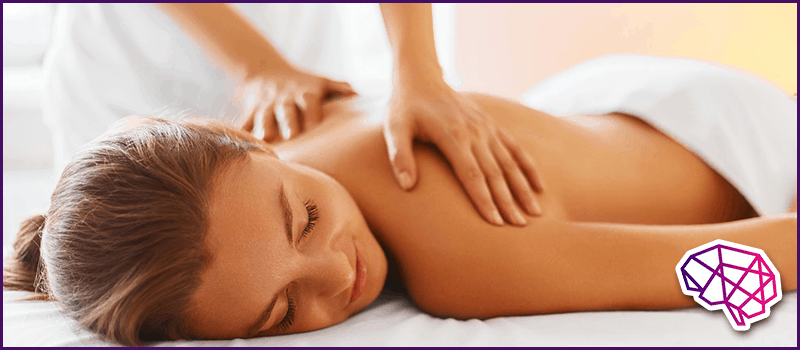
If you’ve ever had a massage, you’ll know how good it feels to lie down, relax and have someone relieve your tensions, stresses and anxieties. However, massages can also have even more profound effects than that. They have successfully been used to address chronic pain and fatigue – and even offer benefits during childbirth, by decreasing pain and increasing contractions, the combination of which can lead to reduced time in labour.17
The positive effects induced by massages are linked to a multitude of hormones, including endorphins, dopamine, oxytocin and serotonin – all ‘feel good’ hormones. Therefore, it can be surmised that massage therapy is one of the most potent mood-boosting therapies in existence today.
Hot Baths
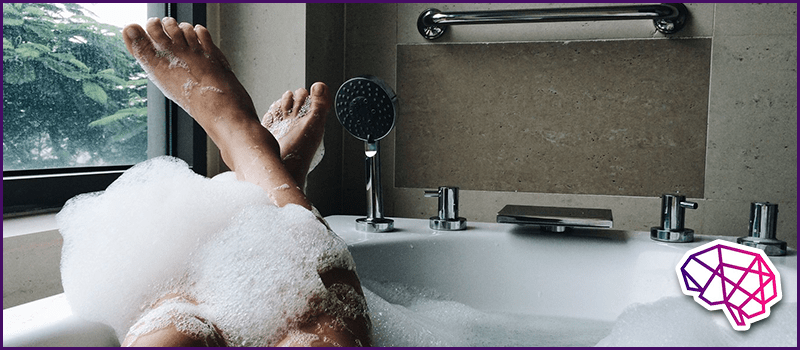
If there’s one thing that’s synonymous with reliving stress; it’s taking a hot bubble bath at the end of a long, tiresome day. Hot water can help to release tension in the body, reduce muscle pain and – most significantly – induce the release of endorphins into your bloodstream. But the list of benefits doesn’t stop there; they have also been shown to have a positive effect on both short- and long-term cardiovascular health by decreasing blood pressure.
If you’re looking to completely wind down and relax after a long, hard day, why not combine a soak in a hot bath with essential oils for an even greater endorphin boost?
Boosting Endorphins The Natural Way: A Conclusion
Life is full of opportunities to boost endorphins and feel good, and there an almost infinite number of things you can do to induce the positive effects and state of mind that endorphins release induces. While the above list contains examples that have scientific research to back them up, that doesn’t mean that there aren’t a wide array of other things you can do to experience the same effects. Go out and enjoy life, and you’ll feel the power of endorphins.
Thank you for taking the time to visit our blog; we really do appreciate it a lot! If you’d like to learn more about brain health, cognitive function, nootropics (‘smart drugs’), and everything related to our grey matter, feel free to head over to our homepage and browse our blog posts. Or, alternatively, use the search function if there’s a topic you’re specifically interested in.
If you can’t find information on a specific brain-related topic, get in touch and we’ll try and write a blog post on it!
References:
1. Sprouse-Blum, A.S., Smith, G., Sugai, D. and Parsa, F.D. (2010). Understanding endorphins and their importance in pain management. Hawaii medical journal, (online) 69(3), pp.70–1. Available at: https://www.ncbi.nlm.nih.gov/pmc/articles/PMC3104618/.
2. www.ixueshu.com. (n.d.). Release of Endomorphin Hormone and Its Effects on Our Body and Moods: A Review_爱学术. (online) Available at: https://www.ixueshu.com/document/8345171e8e4bca8cea7b054dd75
d537c318947a18e7f9386.html
2. Saanijoki, T., Tuominen, L., Tuulari, J.J., Nummenmaa, L., Arponen, E., Kalliokoski, K. and Hirvonen, J. (2017). Opioid Release after High-Intensity Interval Training in Healthy Human Subjects. Neuropsychopharmacology, 43(2), pp.246–254.
4. Cohen, E.E.A., Ejsmond-Frey, R., Knight, N. and Dunbar, R.I.M. (2009). Rowers’ high: behavioural synchrony is correlated with elevated pain thresholds. Biology Letters, 6(1), pp.106–108.
5. Vickers, A.J., Cronin, A.M., Maschino, A.C., Lewith, G., MacPherson, H., Foster, N.E., Sherman, K.J., Witt, C.M., Linde, K. and Acupuncture Trialists’ Collaboration, for the (2012). Acupuncture for Chronic Pain. Archives of Internal Medicine, (online) 172(19), p.1444. Available at: https://jamanetwork.com/journals/jamainternalmedicine/article-abstract/1357513
6. Sniezek, D.P. and Siddiqui, I.J. (2013). Acupuncture for Treating Anxiety and Depression in Women: A Clinical Systematic Review. Medical Acupuncture, 25(3), pp.164–172.
7. Habek, D., Habek, J.C. and Barbir, A. (2002). Using acupuncture to treat premenstrual syndrome. Archives of gynecology and obstetrics, (online) 267(1), pp.23–6. Available at: https://www.ncbi.nlm.nih.gov/pubmed/12410369/
8. Han, J.-S. (2004). Acupuncture and endorphins. Neuroscience Letters, 361(1–3), pp.258–261.
9. www.ixueshu.com. (n.d.). Release of Endomorphin Hormone and Its Effects on Our Body and Moods: A Review_爱学术. (online) Available at: https://www.ixueshu.com/document/8345171e8e4bca8cea7b054dd75
d537c318947a18e7f9386.html
10. Nikjoo, R., Shahnazi, M., Yavarikia, P. and Mohammad-Alizadeh-Charandabi, S. (n.d.). Inhaled Lavender Effect on Anxiety and Pain Caused From Intrauterine Device Insertion. Journal of Caring Sciences, (online) 2012(4), pp.255–261. Available at: https://journals.tbzmed.ac.ir/JCS/Manuscript/JCS-1-255.pdf
11. Takeda, A., Watanuki, E. and Koyama, S. (2017). Effects of Inhalation Aromatherapy on Symptoms of Sleep Disturbance in the Elderly with Dementia. Evidence-Based Complementary and Alternative Medicine, 2017, pp.1–7.
12. J, Y. (2016). Therapeutic Benefits of Laughter in Mental Health: A Theoretical Review. (online) The Tohoku journal of experimental medicine. Available at: https://pubmed.ncbi.nlm.nih.gov/27439375/.
13. Manninen, S., Tuominen, L., Dunbar, R.I., Karjalainen, T., Hirvonen, J., Arponen, E., Hari, R., Jääskeläinen, I.P., Sams, M. and Nummenmaa, L. (2017). Social Laughter Triggers Endogenous Opioid Release in Humans. The Journal of Neuroscience, (online) 37(25), pp.6125–6131. Available at: https://www.jneurosci.org/content/37/25/6125
14. Dunbar, R.I.M., Teasdale, B., Thompson, J., Budelmann, F., Duncan, S., van Emde Boas, E. and Maguire, L. (2016). Emotional arousal when watching drama increases pain threshold and social bonding. Royal Society Open Science, (online) 3(9), p.160288. Available at: https://www.ncbi.nlm.nih.gov/pmc/articles/PMC5043313/.
15. Mathers, N. (2016). Compassion and the science of kindness: Harvard Davis Lecture 2015. British Journal of General Practice, (online) 66(648), pp.e525–e527. Available at: https://bjgp.org/content/66/648/e525.
16. Dunbar, R.I.M., Kaskatis, K., MacDonald, I. and Barra, V. (2012). Performance of music elevates pain threshold and positive affect: implications for the evolutionary function of music. Evolutionary Psychology: An International Journal of Evolutionary Approaches to Psychology and Behavior, (online) 10(4), pp.688–702. Available at: https://pubmed.ncbi.nlm.nih.gov/23089077/
17. Bolbol-Haghighi, N. (2016). Effect of Massage Therapy on Duration of Labour: A Randomized Controlled Trial. JOURNAL OF CLINICAL AND DIAGNOSTIC RESEARCH.